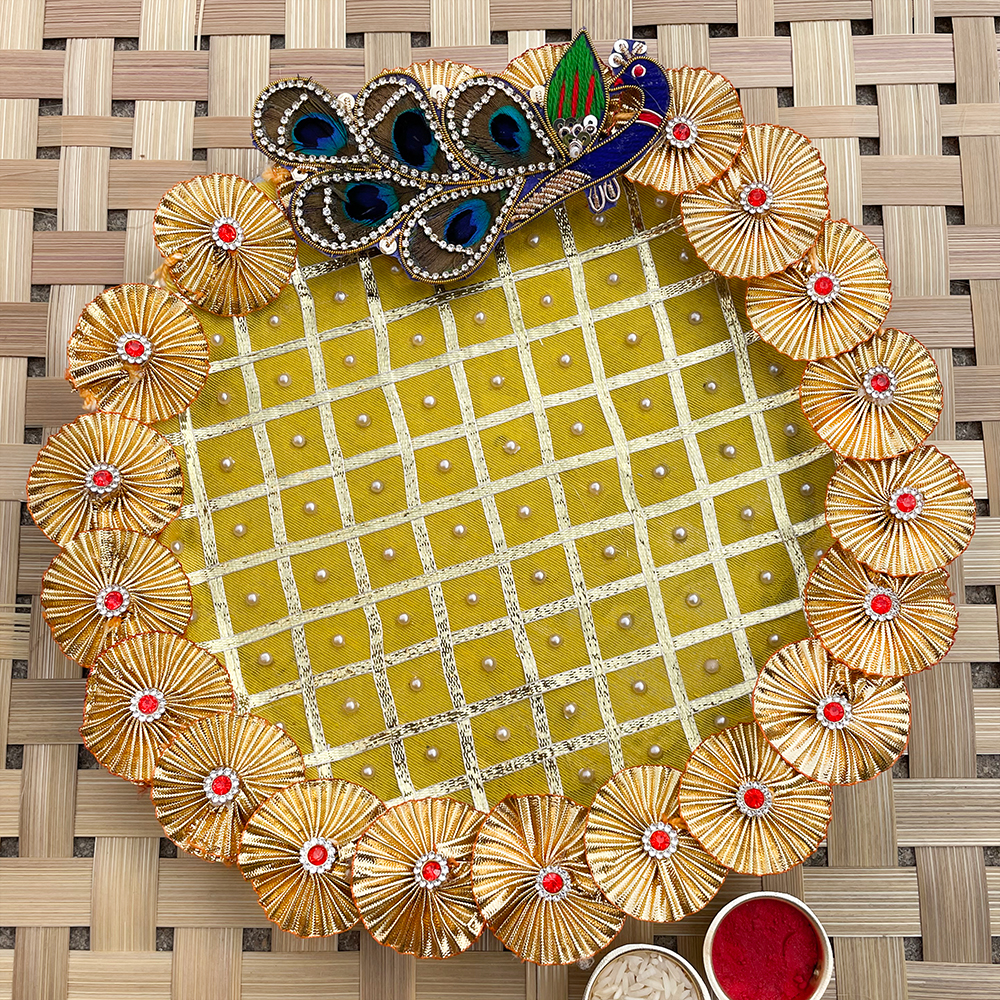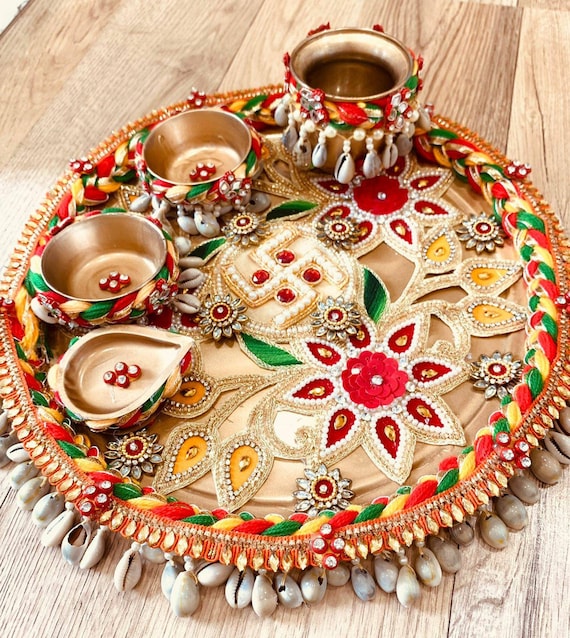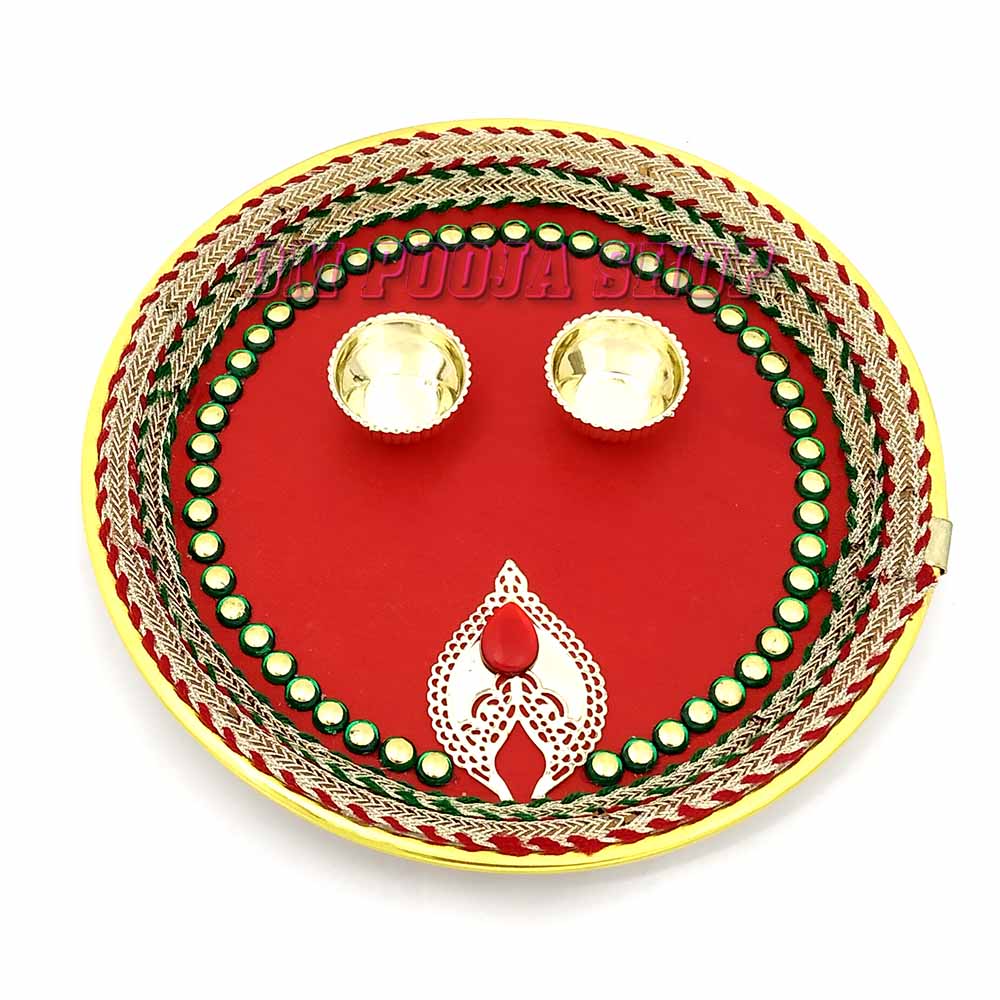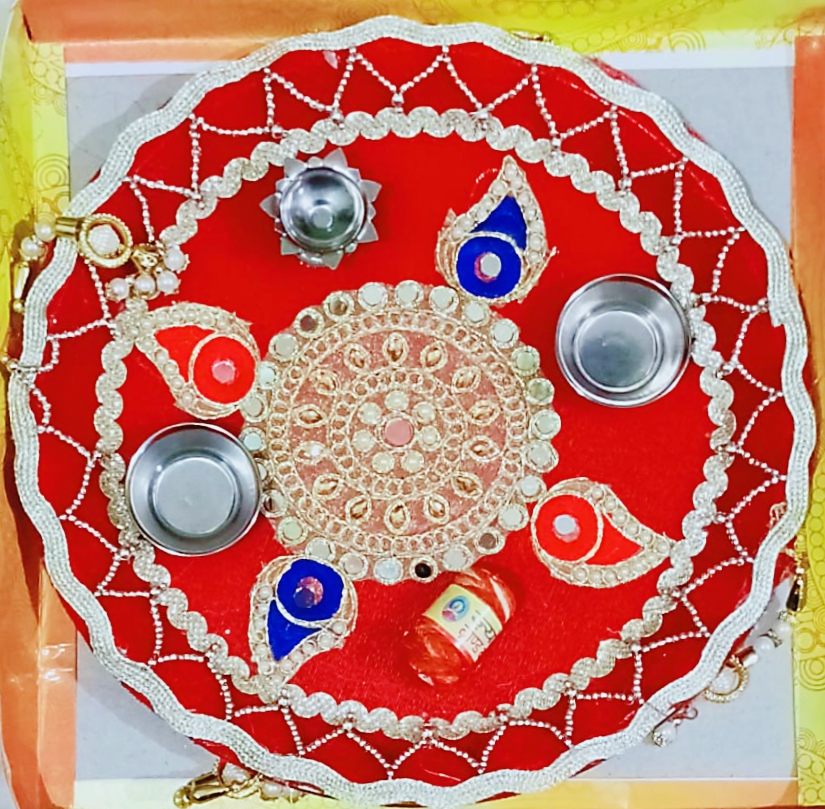When it comes to celebration and worship in Indian culture, a decorated puja thali is more than just a plate; it is an embodiment of love, devotion, and tradition. From deep-seated rituals to modern touches, a puja thali reflects the faith and beliefs of the individual. In this comprehensive guide, we will explore everything you need to know about puja thalis, from their significance to how to choose one that resonates with your personal style. So, let’s dive in!
What is a Decorated Puja Thali?
A puja thali is a traditional plate used in Hindu rituals to hold items that are offered to deities during puja (worship). Typically made from metals like brass, silver, or gold, they are decorated with vibrant colors, intricate designs, and symbolic motifs.
Significance of a Puja Thali
- Spiritual Connection: The puja thali serves as a medium to connect with the divine.
- Symbolism: Each item on the thali represents different aspects of life and spirituality.
- Cultural Heritage: Decorated thalis are a reflection of rich Indian traditions and values.
Popular Designs of Decorated Puja Thalis
Decorated puja thalis are available in a variety of designs, each with its own unique features.
Traditional vs. Modern Designs
| Feature | Traditional Designs | Modern Designs |
|---|---|---|
| Materials | Brass, Silver, Wood | Glass, Ceramic, Eco-friendly Materials |
| Design Elements | Intricate carvings, Religious symbols | Simplistic and minimalist with contemporary motifs |
| Color Palette | Rich, vibrant colors | Pastel and muted tones |

Creative Ideas for Decorating Your Puja Thali
Decorating your puja thali can be a fun and engaging activity. Here are a few creative ideas:
- Glimmering Glitter: Adding glitter to your thali can give it a festive touch.
- Floral Arrangements: Incorporate fresh flowers for a natural and fragrant appeal.
- Personal Touch: Add initials or symbols that hold special meaning to you or your family.
Materials Used for Puja Thalis
Choosing the right material impacts both the aesthetics and durability of your puja thali.

Common Materials
- Brass: Known for its durability and traditional appeal.
- Silver: Symbolizes purity, often used for special occasions.
- Copper: Engages in antibacterial properties and is aesthetically pleasing.
- Wood: Eco-friendly and can be intricately carved.
Pros and Cons of Different Materials
| Material | Pros | Cons |
|---|---|---|
| Brass | Durable, traditional look | Tarnishes over time |
| Silver | Elegant, signifies purity | Expensive, requires maintenance |
| Copper | Antibacterial, stylish | Can be reactive with certain foods |
| Wood | Eco-friendly, unique designs | Not suitable for all settings |

How to Choose the Right Decorated Puja Thali
Selecting the right puja thali is essential for fulfilling your cultural and spiritual needs. Here are some tips to guide you:
Consider the Occasion
- For regular rituals, a simple and elegant thali may suffice.
- For festive occasions, opt for more elaborate decorations and designs.

Match Your Personal Style
Choose designs and colors that reflect your personality and home decor. A thali that resonates with you will enhance your puja experience.
Check Quality and Durability
Ensure that the materials used are of high quality to withstand years of use. Look for products with good reviews and ratings.

Maintaining Your Decorated Puja Thali
To keep your thali looking beautiful, regular maintenance is essential. Here are some tips:
Cleaning Techniques
- Brass: Use lemon juice and baking soda for a natural shine.
- Silver: Wipe with a soft cloth and use silver polish as needed.
- Copper: Use vinegar and salt to remove tarnishes.
- Wood: Wipe with a damp cloth and avoid soaking.

Storage Tips
Store your thali in a cool, dry place, preferably wrapped in soft cloth to prevent scratches.
Personal Experience: My Journey with Puja Thalis
Growing up in a traditional Indian household, the puja thali was always an integral part of our festivities. Each year, during Diwali, my mother would bring out a beautifully decorated thali that had been passed down through generations. The joy of preparing it, adding fresh flowers and sweets, was a cherished family activity. Over the years, I have come to appreciate the art of decorating thalis and the significance behind each item placed on it. From humble beginnings to elaborate designs, these experiences have shaped my appreciation for this beautiful ritual.
FAQs About Decorated Puja Thalis
1. What items should be included in a puja thali?
A typical puja thali may include items like a diya (lamp), incense sticks, flowers, sweets, and various offerings specific to the deity being worshipped.
2. Can I make my own decorated puja thali?
Absolutely! Making your own puja thali can be a rewarding experience. You can use eco-friendly materials and personalize it according to your taste.
3. How do I choose the right size of puja thali?
The size of the thali should correspond to the number of items you plan to place on it. For larger gatherings, opt for bigger thalis; for smaller, personal rituals, a compact one works best.
4. Are decorated puja thalis expensive?
The price of decorated puja thalis varies widely based on materials, size, and intricacy of design. You can find options to suit every budget.
5. Where can I buy a good decorated puja thali?
You can purchase puja thalis online from marketplaces like Amazon, or visit local handicraft stores to find unique, artisanal pieces.
Conclusion
Your puja thali is not just a plate but a canvas of your faith, culture, and creativity. By understanding its significance and selecting the right design, you can create a beautiful experience during your worship rituals. Whether you are diving into traditional designs or exploring modern aesthetics, the perfect thali awaits you. Embrace the art of the puja thali and let it bring a sense of joy and spirituality into your life.